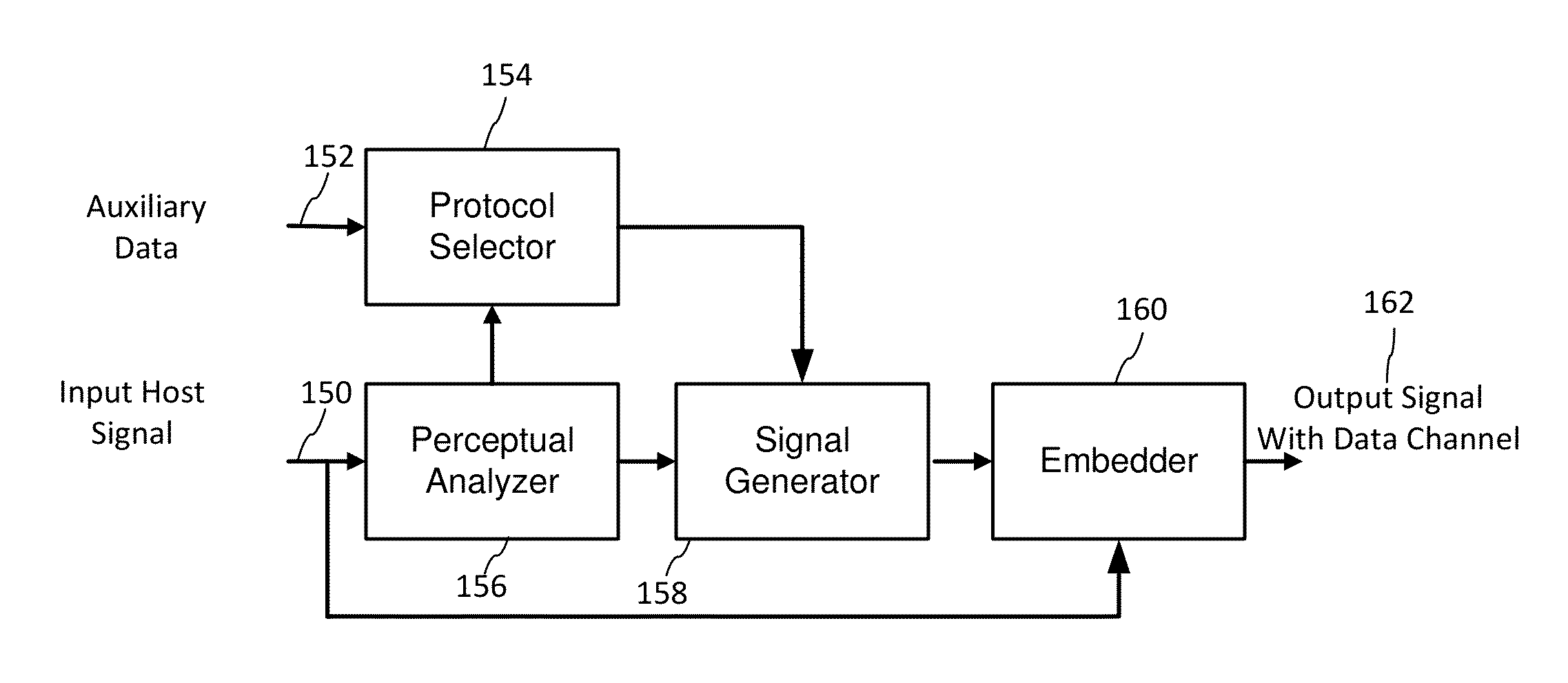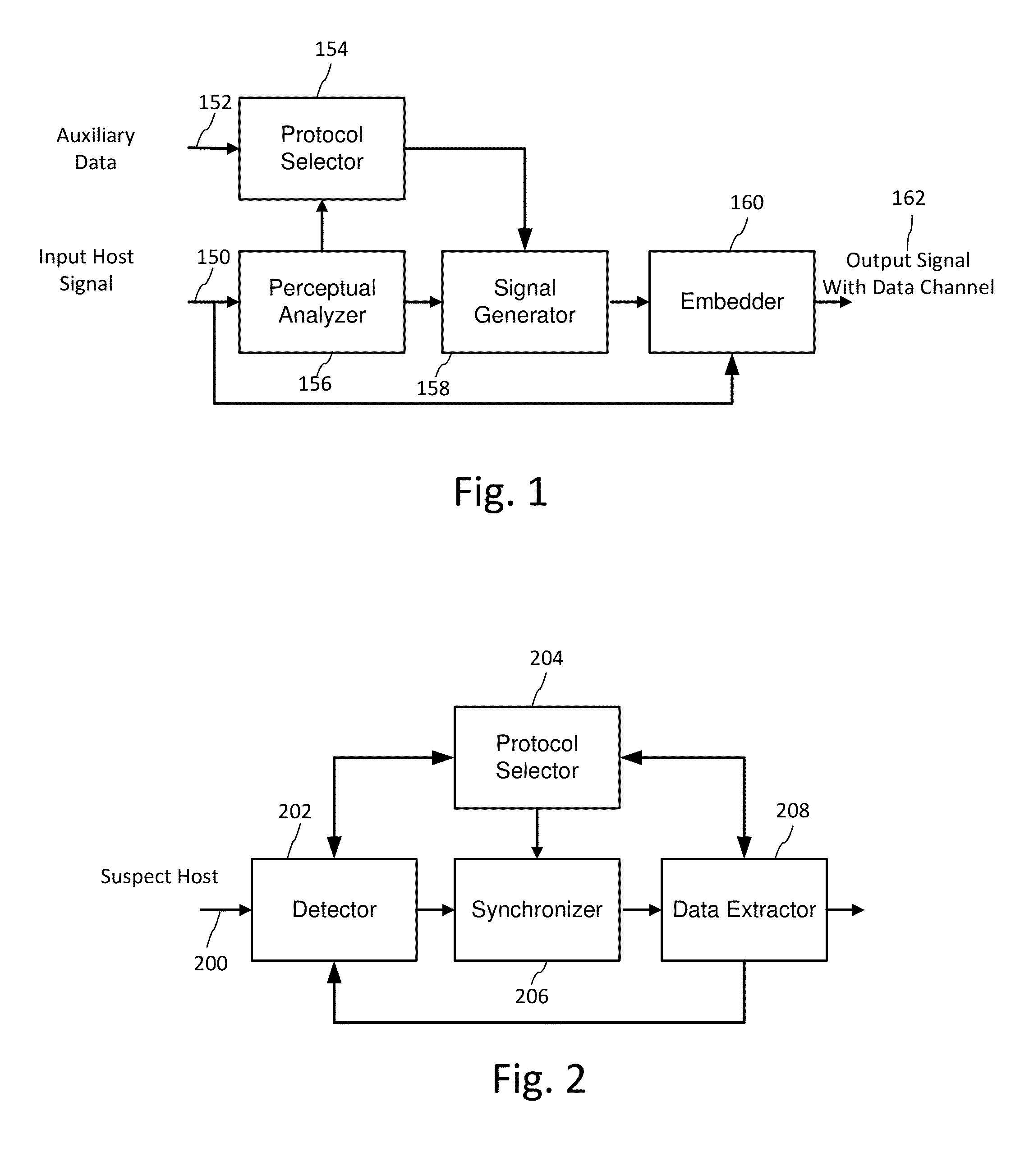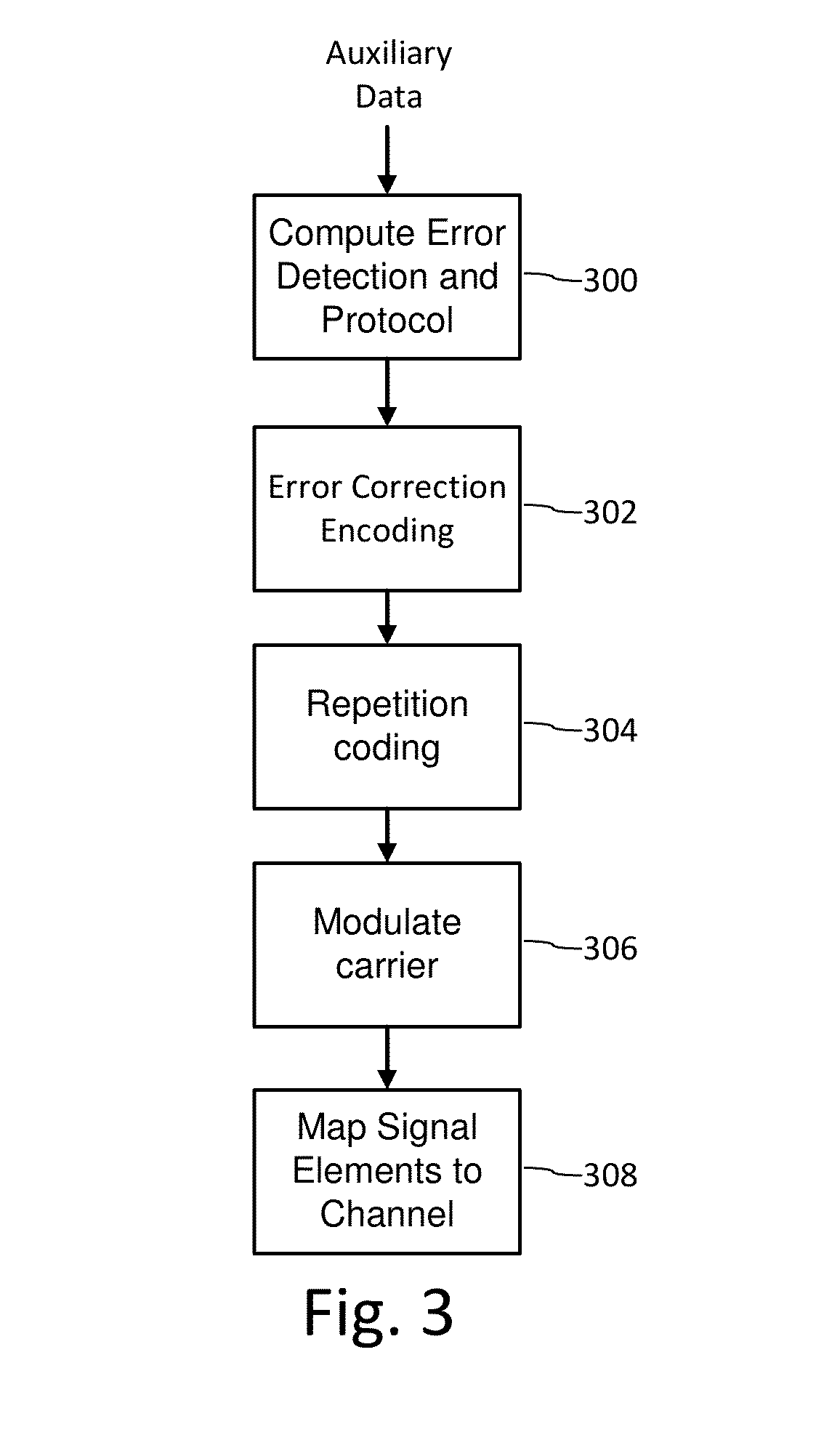Differential modulation for robust signaling and synchronization
a differential modulation and signaling technology, applied in the field of signal communication, can solve the problems of increasing data capacity, affecting reliability, data signal encountering distortion, etc., and achieve the effect of minimizing the impact of embedding on reducing data capacity, and not impairing the perceptual quality of the host signal
- Summary
- Abstract
- Description
- Claims
- Application Information
AI Technical Summary
Benefits of technology
Problems solved by technology
Method used
Image
Examples
embodiment 2
2.1. The method of embodiment 2,
wherein the act of associating at least one first bit of the auxiliary data with the first modulation kernel comprises:
obtaining a data kernel characterized by a set of modulation elements, wherein modulation values are assigned to the modulation elements of the data kernel; associating the at least one first bit of the auxiliary data with a first subset of the modulation elements; and
wherein the act of obtaining the first modulation kernel comprises setting the data kernel having the first subset of the modulation elements associated with the at least one first bit of the auxiliary data as the first modulation kernel.
2.2 The method of embodiment 2.1, wherein the data kernel consists of binary coefficients.
[0180]Binary coefficients are −1, 0 or 1. Alternatively, data kernel can include non-binary coefficients.
[0181]Second-Level Data Kernel—Multi-Bit
3. The method of any of embodiments 2 to 2.1, further comprising encoding the auxiliary data into the ho...
embodiment 3
3.1. The method of embodiment 3,
wherein the act of associating at least one second bit of the auxiliary data with the first modulation kernel comprises associating the at least one second bit of the auxiliary data with a second subset of the modulation elements of the data kernel; and
wherein the act of obtaining the first modulation kernel comprises setting the data kernel having the first and second subsets, respectively associated with the at least one first bit of the auxiliary data and the at least one second bit of the auxiliary data, as the first modulation kernel.
3.2. The method of embodiment 3.1, wherein the first subset includes at least one modulation element that is also included in the second subset.
3.3. The method of any of embodiments 3.1 to 3.2, wherein the first subset includes at least one modulation element that is not included in the second subset.
3.4. The method of embodiment 3.3, wherein the first subset includes no modulation element that is included in the sec...
embodiment 4
5. The method of embodiment 4, wherein the second set of host media elements includes at least one media element that is not included in the first set of host media elements.
PUM
 Login to View More
Login to View More Abstract
Description
Claims
Application Information
 Login to View More
Login to View More - R&D
- Intellectual Property
- Life Sciences
- Materials
- Tech Scout
- Unparalleled Data Quality
- Higher Quality Content
- 60% Fewer Hallucinations
Browse by: Latest US Patents, China's latest patents, Technical Efficacy Thesaurus, Application Domain, Technology Topic, Popular Technical Reports.
© 2025 PatSnap. All rights reserved.Legal|Privacy policy|Modern Slavery Act Transparency Statement|Sitemap|About US| Contact US: help@patsnap.com



